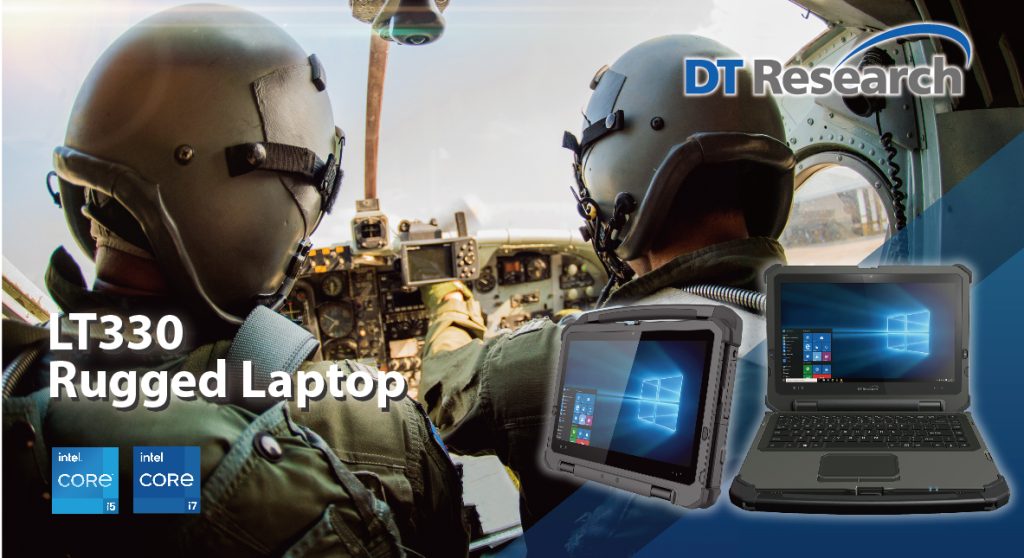
To succeed in today’s evolving combat and defense environment, an increase in the ability to process and act upon real-time data is a must. As military operations grow more complex, so does the need for intelligent systems that can keep up with high-speed, high-stakes decision-making at the tactical edge.
Here come rugged tablets and laptops stepping in not just as tools of communication and documentation, but as mission-critical mobile computers capable of handling real-time data analysis in the field.
Rugged tablets and laptops are redefining how military units collect, interpret, and act on information. Built for harsh and unpredictable conditions, they go beyond durability. Their advanced processing capabilities, secure networking features, and integration with AI-powered systems are turning them into indispensable allies for the modern military.
Built for the Battlefield
Unlike standard commercial devices, rugged tablets and laptops are engineered from the inside out to meet military-grade standards for shock, vibration, temperature extremes, dust, and water exposure. They operate reliably in desert heat, arctic cold, and the back of a moving vehicle. These systems are equipped with reinforced enclosures, sealed ports, and sunlight-readable displays, ensuring usability and performance in unpredictable environments.
But ruggedness is only one part of the equation. The growing demand is for wireless computing devices that are not only tough but also smart—able to support real-time processing of vast data streams without delay.
Real-Time Situational Awareness
At the tactical edge, information can mean the difference between mission success and failure. Field units rely on sensor data, imagery, geospatial intelligence, and more—all of which must be processed quickly and securely. Rugged laptops and tablets designed for this level of performance often include powerful CPUs and GPUs, enabling them to run AI and machine learning algorithms directly on the computer.
This edge processing capability reduces latency and ensures that even in disconnected or low-bandwidth environments, critical decisions can still be made based on current data. Whether it’s interpreting signals from ground sensors, analyzing drone footage, or recognizing patterns in surveillance imagery, rugged tablets and laptops allow for on-the-spot decision-making without depending entirely on centralized command systems.
Seamless Integration with ISR and AI Systems
Intelligence, Surveillance, and Reconnaissance (ISR) systems are fundamental to modern military operations. Rugged tablets and laptops are now routinely integrated into ISR workflows, helping soldiers view, annotate, and transmit data in real-time. Some tablets and laptops can connect with multi-sensor arrays, unmanned systems, and wearable technologies, forming part of a larger networked battlefield architecture.
These portable computers can also run AI-driven software that assists in filtering data noise, identifying anomalies, or even predicting potential threats based on historical patterns and sensor inputs. Instead of manually sifting through endless feeds, warfighters are presented with high-confidence alerts and actionable insights—all from the same rugged solution they carry into the field.
Enhanced Security and Communication
Security is a non-negotiable requirement for military technology, and rugged tablets and laptops come equipped with advanced encryption, secure boot features, and compliance with the latest cybersecurity protocols. Many models support multiple authentication methods including CAC readers, biometrics, and secure token-based logins.
Communication features are also critical. These handheld and mobile systems support a wide range of connectivity options—secure Wi-Fi, LTE, satellite communications, and even mesh networks—to ensure that data can be shared with command centers or fellow units without compromise.
Field-Proven Versatility
One of the greatest strengths of rugged computing systems is their flexibility. Depending on mission needs, these devices can serve as command center hubs, mobile mapping stations, drone control units, or medical data loggers. Detachable keyboards, modular I/O ports, and mountable designs enable use across vehicles, aircraft, and field deployments.
Touchscreens compatible with gloves or styluses make operation easier in combat gear. Long battery life and hot-swappable batteries ensure that the tablets and laptops stay operational for extended missions without frequent downtime.
The demand for rugged tablets and laptops in defense operations continues to rise—and for good reason. As field operations becomes increasingly data-driven, the ability to analyze information at the tactical edge has become essential. These rugged computers not only survive the battlefield, but help shape its outcomes by delivering the processing power and intelligence that modern missions require.
From improving situational awareness to supporting ISR workflows and AI analysis, rugged tablets and laptops are no longer just accessories—they are mission enablers. In a world where real-time decisions can determine the fate of operations, having the right technology at hand is not a luxury—it’s a necessity.

